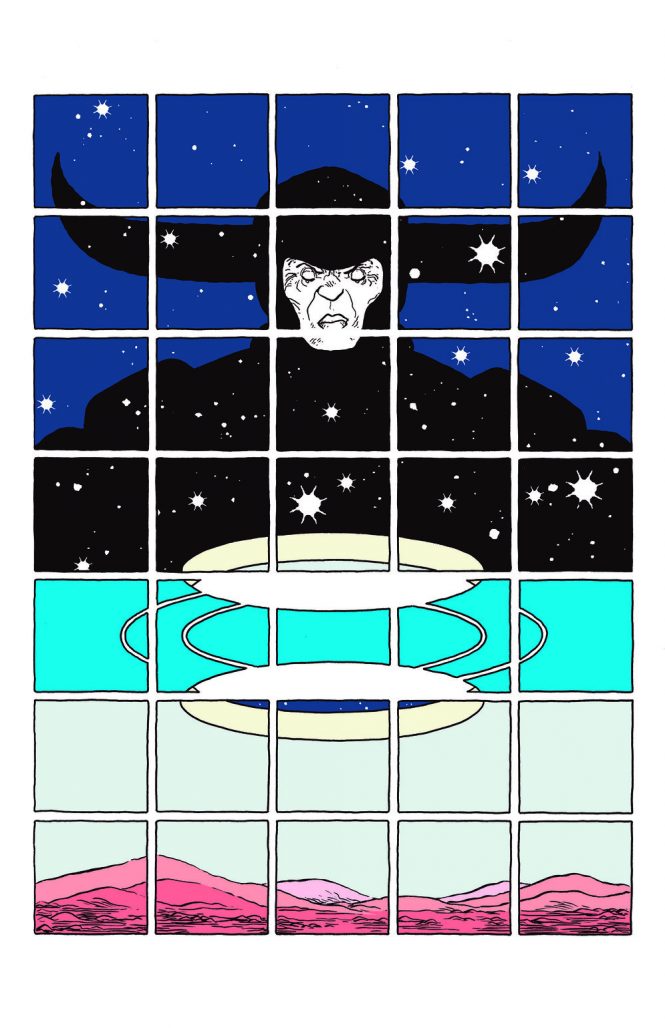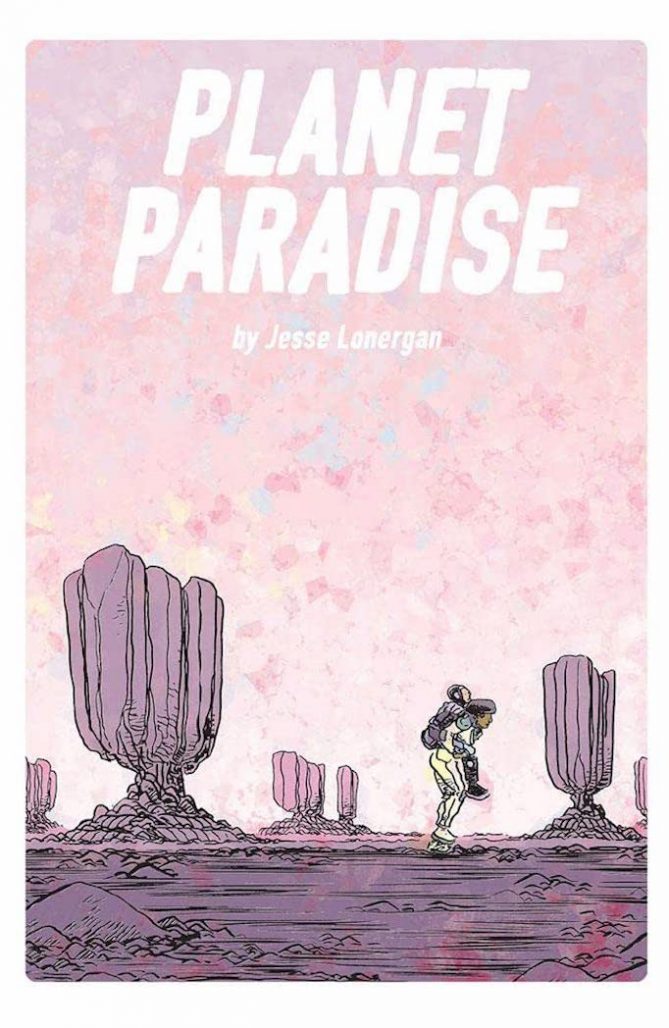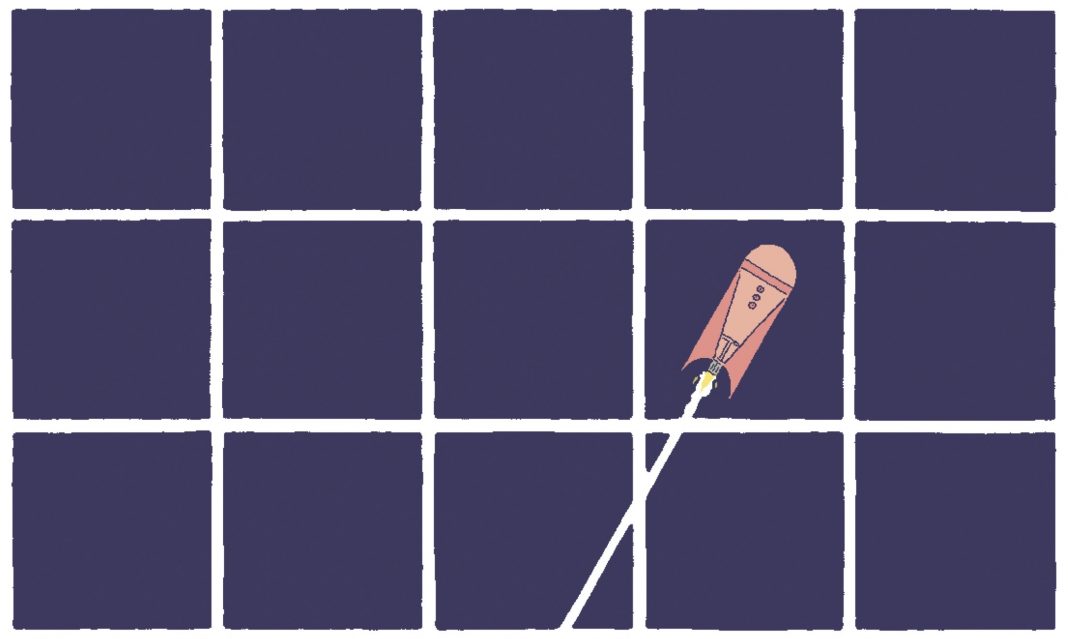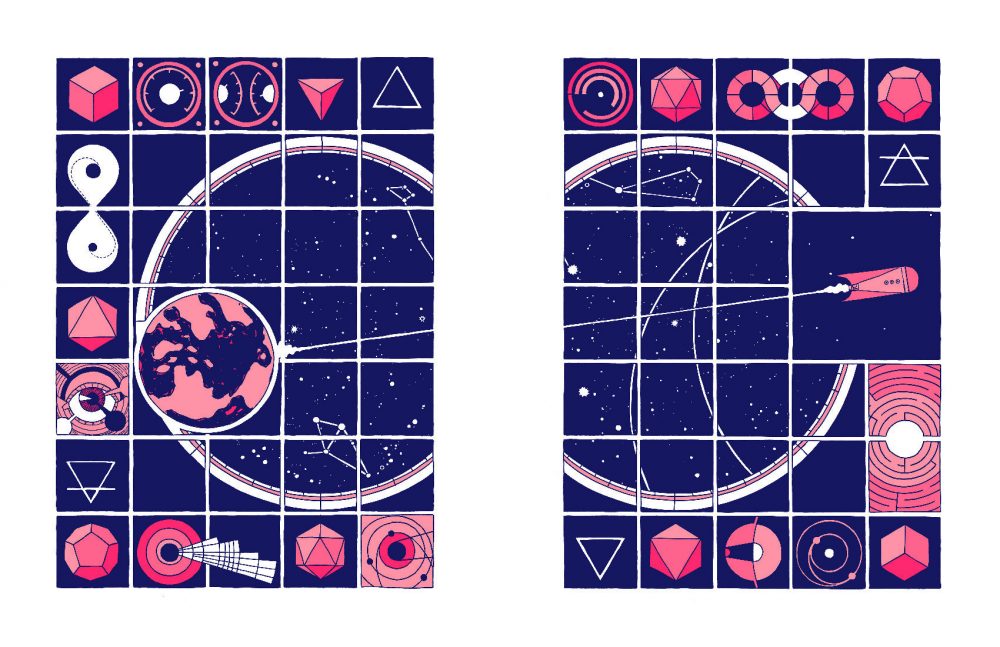Like a lot of readers, I was introduced to the work of Jesse Lonergan with the cartoonist’s comic HEDRA published by Image Comics. The oversized one-shot impressed readers with its Moebius-infused panel layouts and imaginative take on a space adventure. I had the opportunity to interview Jesse Lonergan about HEDRA, several other projects he has in development, and transitioning from alternative comics to creating comics and graphic novels at Image.
The reception to HEDRA has been really strong. Have you received a lot of attention since it was released?
Yeah, the reception seems like it’s been pretty positive. My social media following has increased, I’ve been asked to do more interviews, things like that.
That’s great. Do you feel like HEDRA introduced you to a different kind of audience than who your previous work for NBM Publishing reached?
Yeah, definitely. The stuff I did for NBM was in the alternative indie comics sort of vein. I guess Image is technically indie but it’s on a different scale, so this was the first thing a lot of people saw from me.
How did you connect with Image?
Eric Stephenson contacted me, I think over Twitter, and asked if I wanted to do a mass-market version of HEDRA. I ran a Black Friday sale for the original newsprint edition and it seems like the right people retweeted my post and purchased it, which got a copy of HEDRA in front of Eric.
And did your deal with Image to publish Planet Paradise follow that?
Yeah, it came out of that.
Pages of HEDRA and PRIME are very dense with really high panel counts. Does that increase the amount of work involved in each page?

It depends. If each panel is an individual drawing then it does add a lot of time. But a number of the panels are just [one part of a larger image], which doesn’t add that much extra work.
It can take a very long time just to draw the panel grids. With PRIME, my panels are getting pretty complicated or panels are overlapping each other. Keeping track of where one panel ends and another begins has become the most delicate part of inking, which is its own slow process.
Do you spend a lot more time than usual on the breakdowns in order to structure the pages, or do the breakdowns require more detail?
They don’t require more detail but they involve a lot of iteration. I start with an idea for how I want a page to work and then I’ll lay it out, but often won’t be happy with the layout so I’ll do another layout and another and another. I actually ended up cutting several pages from HEDRA because I didn’t think they were quite right.
People have been asking if they can buy original pages from HEDRA so I looked through the original art. I was reminded that a large number of the pages found in the comic don’t actually exist in a physical form because they’re sort of Frankensteined together, using parts of multiple pages.
Did you have a lot of control over the production of the mass-market version of HEDRA?
Yeah, I think that’s the benefit of the model. Image gives the creator basically total freedom, even more than most smaller publishers offer. It’s sort of funny to think of Image as this huge company behind comics like The Walking Dead and Saga, because at the same time they’re not Disney, they’re not Warner Brothers. All the books are creator-owned.
If you want to make a comic standard-sized comic with standard paper then that’s very easy for Image to do. But they gave me the option to do oversized things and explained how much everything would cost and [how many units I would have to sell] to reach a profit. It’s a pretty-hands on experience.
Do you think your experience with self-publishing prepared you for that?
Everything I self-published was on a much smaller scale. Image also goes through the Direct Market, which I’m not familiar with at all. In the Direct Market, you have to have solicits by this date, art by this date, all of those sorts of things. When I’m self-publishing I‘m done when I’m done. It’s very much on my own schedule, which can be as lackadaisical as I am.
Is your Patreon account a good motivator to produce art since it creates an audience to share your work with?
Yeah, I think so. I don’t really have a problem producing work, but what I do have a problem with is focusing. I always have a bunch of different products I want to work on, but running a Patreon makes me aware of the reader. If I were the reader and a creator was posting three pages of Project A and then two pages of Project B and three pages of Project C, I would be very frustrated. The Patreon helps me make concrete choices about what I’m working on.

Will Planet Paradise be oversized or standard comic dimensions?
It’s going to be undersized [laughs]. I think it’ll be 6 inches by 6.5 inches, which is closer to the manga size used by users or the Sin City graphic novels. This might just be from my indie background, but I think I prefer to publish my work in a slightly different size. When you go to your local comic book shop you find row upon row of graphic novels the exact same size. I feel slightly uncomfortable with the idea of using the same size as all those books. Plus, Planet Paradise shares some manga aesthetics and is a smaller kind of story, so I think the reduced size fits the material.
On your website, you shared that one of your comics was edited by Heavy Metal and the version they published in an issue of the magazine included more captions and contained a more definitive ending. Do you think mainstream comics shy away from the ambiguity in favor of something more concrete?
I don’t know that I’m really in a position to answer that, since I don’t have that much experience with the mainstream. […] That story was originally very open-ended, and when it goes into a magazine I think it does need a bit more closure. So it’s not that I disagreed with their suggestions, it’s just not what I would have done on my own. But I was happy to be able to share my version on my website.
Has the success of HEDRA changed how you see your career going forward? Has it impacted your perspective on where it could be heading and your future in comics?
I guess so. I don’t know how successful HEDRA will be in the long term. The first printing sold out, which is great, but I don’t know what will happen to the second printing or anything beyond that.
I think that if I pitch something else to Image, they’d be more likely to be receptive than if HEDRA hadn’t been successful. So that’s something, I guess. More people seem to know my name, which provides more opportunities. I don’t know if it changes how I think about things creatively.
I still feel very much like an outsider to the mainstream. The way I’ve made comics up to this point is to make something without knowing if there will be a publisher behind it. If there wasn’t I would just publish it myself. Now it seems more likely I’ll find a publisher for whatever I choose to do next. Maybe then I’ll start thinking about audiences, but I don’t know.
Follow Jesse Lonergan on Twitter @jesselonergans and Instagram jesse.lonergan. Learn more about his work on his wonderful website and support him on Patreon.
The second printing of HEDRA arrives in comic book shops tomorrow, September 2, and Jesse’s next graphic novel Planet Paradise will be available in comic shops on Wednesday, November 11 and in bookstores on Tuesday, November 17. Pre-order with the ISBN 9781534316980 or the Diamond Code AUG200053.
Matt Chats is a twice-monthly interview series featuring discussions with creators or players in comics, diving deep into industry and creative topics. Find its author, Matt O’Keefe, on Twitter and Tumblr. Email him with questions, comments, complaints, or whatever else is on your mind at [email protected].














